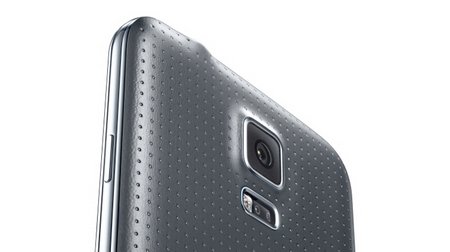Samsung Galaxy S5 sales were 40 percent less than projected in 3 months since launch

Somewhere, there is a warehouse full of unsold Galaxy S5s. Samsung’s flagship handset, launched in Q1 this year, packed in everything including the kitchen sink. It followed the South Korean company’s strategy of taking the best features of every handset on the market and giving them a unique spin in its latest Galaxy handset. And the estimates on how well it would sell have proven to be… rather optimistic.
Forty percent of the manufactured Samsung Galaxy S5s are reportedly still in warehouses around the world (reports The Wall Street Journal). While Samsung was confident that it had a hit phone and increased production by twenty percent, the S5 has sold 12 million units; four million units less than a year-on-year comparison with the Galaxy S4.
While sales of the Galaxy S5 are up in the US, other key territories saw Samsung’s estimates to be punishingly out of step with reality. China, an area that many manufacturers are targeting to provide high levels of growth, has seen S5 sales running at just fifty percent of the sales of the S4.
The WSJ believes that the drop in sales will see Samsung move the responsibilities of the mobile team pass from JK Shin to BK Yoon (who currently oversees the TV and Home Appliance team). Samsung has declined to comment on these ‘rumors and speculation.’
What is clear is that the lack of Galaxy S5 sales has blown a hole in Samsung’s income for the year. Given the company’s last earnings call talked about a 60% drop in year-on-year income, the failure of the S5 to feel has accelerated the lack of performance from the mobile team.
Shifting the overstock of the Galaxy S5 is going to be an expensive business, with more marketing budget required to promote the handset, and the selling price is likely going to have to drop, leading to lower margins and a corresponding fall in executed income and revenue. It’s also going to have a knock-on effect across Samsung’s portfolio (including the critically acclaimed Galaxy Note 4), its plans to revitalise its product line up with the new design language present in the Galaxy Alpha, the A3, and the A5 handsets, and could well be one of the reasons why the company is reportedly dropping one-third of its portfolio. If the market is about to be flooded with S5s, the focus needs to be on those sales.
Samsung is going to suffer continued pain over this over-confidence, but it may prove to be a stormy cloud with a sliver lining. Next year’s flagship (provisionally titled by everyone as the Galaxy S6) needs to be a distinctive and disruptive handset that sets Samsung as a leader in innovation and not as a fast follower. With new management in the mobile devices section, and significant volumes of evidence that a ‘slightly improved on last year’s handset’ is no longer enough to guarantee sales, there is every chance that Samsung might finally get around to disrupting itself.
It might be two years after the optimum time to do so, and the competition in the form of Xiaomi and the fleet of Chinese smartphone manufactures are knocking on Samsung’s door, but I would like to think that Samsung can be nimble enough to retain its place in the smartphone ecosystem. I would like to think that but there needs to be evidence of this happening over the next few months or the South Korean company will fall back just as Nokia, Palm, BlackBerry, Ericsson, and others, have done so in the mobile world.
IMPORT:-Forbes

